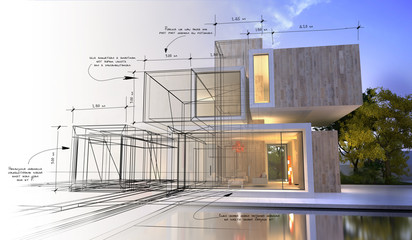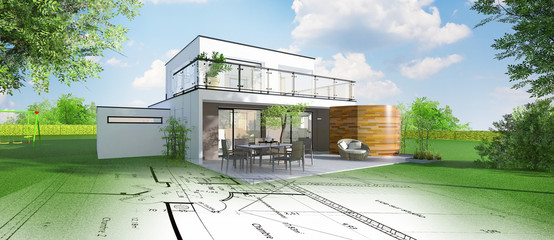Top 7 Principles of Home Design
by Shailendra Kadulkar Web Development & SEOInterior design is one of the most exciting & productive professions. A combination of arts, science, technology that manipulates space, form, texture, colour & light to enrich the integrity of human life. It is also about comprehending society’s behaviour to develop practical areas within a building. We spend most of the time indoors and built environment from waking up from our bedroom to going out to your school or office interiors which gives us some sense & purpose to our lives.
Interior design is about establishing individualised spaces that are as mesmerising as they are practical. Interior design is more than just selecting the curtain fabrics or sofa covers or just selecting the bedsheets, no Interior design is a process and it’s a collaboration where the interior designers work with the clients alongside architects, artists, craftsmen & builders. Interior designers start as soon as they hear about their ideas.
The process of the Interior Design would go like this

Visiting the house is the first step of the process where a Reece of the space is been done to understand the government goals & aims of the future design. To understand the expectations of the client's imaginations.
Moving on to the concept presentation, which is an important step for the interior designers & the clients. During this step, the entire plan & execution are been explained to the clients, whatever has been imagined for the house has been put up in a format where you would understand how & where would the designs come from.
Budget finalisation, according to the concept finalisation whatever design has been selected by the owner, a rough cost calculation has been done on that. To know a rough idea of whether the designs are on point with your budget or it's out of your budget. In the payment process, while you finalise your budget you also get done with your designs & everything, and you pay 50 per cent amount where the work begins.
Starting execution helps you to know better, where you hire a bunch of carpenters working to some corner and the interior designer, on the other hand, executing each & every corner with designs making the clients understand more.
The end of execution is where the entire set-up is done & ready, there might be some polishing left but the main worked so a success. By taking some follow up comments regarding the decor or interior house with the family members or the office employees.
7 Principles of House Design

Since the process is pretty much covered let's check what are the 7 principles of home design and they are as follows-
1.Balance:- Every designer no matter in what field they are in, tend to want to understand the importance of balance. It's all about the visual weights of your space & how to divide it between two sides. Now when we check out the meaning of the Balance in the dictionary it would tell us about evenly distributed ways that enables something to someone to remain steady & upright. For example, when you enter a room, you get the peaceful vibe, too calm & cosy & that is because of the balance. Now balance contains two types: a) Symmetry & b) Asymmetry
A) Symmetry:-
To achieve symmetry we need to produce a mirror image. The way it's on the right side & the same it's on the left side. It's not necessary that everything needs to in a symmetrical form. It can be in a particular portion too & the rest can be asymmetrical too.
B) Asymmetry:-
To achieve asymmetry it's a little difficult, but this would take your design room to well design. To achieve asymmetry there are two elements that you need to achieve with some common factor for instance like there are two different things but their height is similar or there are two different things but their colour matches
2.Rhythm:- As in music, rhythm is all about creating patterns of repetition & contrast to create visual interest you can achieve this by using the same colour or place at different intervals. Its purpose is to move your eye around the room. For instance, you can establish a colour using the pillow by picking up the painting and echoing again on a rug. These repetitions will help carry your eye around the room.
A) Rythm by gradation-
This is where sizes of shapes go from large to small or colour values go from light to dark, so an ombre is going to be an example of creation where something goes from light to dark or dark to light, also sizing it goes from large to small.
B) Rythm by radiation-
Objects radiate out in nearly every direction from a central point.
C) Rythm of opposition -
Opposition change in any of the elements.
D) Rythm by transition-
A subtle visual flow often indicated by a curved line that leads the eye from one point or area to another.
3.Colour:-
Colour is the most important principle of interior design. Colour psychology is a science all on its own and it's an extremely significant element to master when it comes to interior design. We say this a lot that colour does have the ability to affect your moods our psychologies it can make your room seem larger or smaller so you can imagine how important it is to look into this aspect when you're looking on a particular space. Colour can invoke memories and take you on an emotional roller coaster.
4.Light:-
Light is categorised into manmade & natural lighting. Now the light is a critical aspect of any space as without it all the other elements will not be able to shine to their full potential. There’s no way we cannot see the colour without light. Without light, everything is usually black when the light goes. Light can set the mood & atmosphere of a particular space. Now when it comes interior designing light can divide into
A) Accent Lightning
B) Task Lighting
C) Ambient Lighting
5.Texture:-
Now, texture comes in two forms we have
a) Visual texture
b) Actual texture.
A) Visual Texture can only be perceived by the eye as the item may give an impression of texture, just by viewing.
B) Actual Texture- Actual texture is basically where it cannot only be seen but you can touch as well. For example, the texture of the carpet where you just cannot only be seen but when you touch it you can know the material of the same.
6.Pattern:-
Pattern can also be found in wallpaper fabrics carpet & so on the pattern just like colour & texture can be used to add appeal to a room now patterns come in varieties such as animal prints geometrics organics motifs and so much more before you put a certain pattern in a particular space you want to consider the style & size of this room too much of pattern in a small space may be a little bit overwhelming and may make their room feel flattered.
7.Line:-
Creating lines using a room structural design and finding your pieces helps to guide the eye and shift the room. Lines are
A) Horizontal lines-
Horizontal lines are usually created by the tables & other flat surfaces. These slides give stability, formality & efficiency.
B) Vertical lines –
Vertical lines are created by features such as doorways, windows, etc.
C) Dynamic lines-
Dynamic lines refer to zig-zag, curved lines & diagonal. This type of line is mostly seen on the staircase.
Sponsor Ads
Created on Jul 30th 2021 04:29. Viewed 339 times.
Comments
No comment, be the first to comment.



